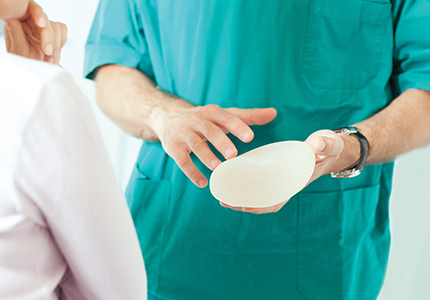Many women are born with large or irregular labia, whilst others can develop this condition after childbirth or due to the natural effects of aging. Psychologically, the appearance of an enlarged labia can cause embarrassment or a loss of self-esteem, whilst on a more physical level chronic labial irritation can develop in women who wear tight clothing and discomfort can occur during sexual intercourse, sports or other physical activities.
About the procedure
Labiaplasty (Labioplasty) or Labia Minora Reduction is a surgical procedure that reduces and/or reshapes the labia minora - the skin surrounding the vaginal opening. In most women, the labia minora are seen only when the legs are separated. However in some women, large labia minora are visible when the legs are not apart, or are barely separated, causing embarrassment, self-consciousness, and distancing in relationships. Enlarged labia may also be noticeable in tight fitting pants, and can cause discomfort during intercourse, with clothes, or with exercise. Enlarged labia are usually congenital but may be increased from hormonal changes or childbirth.
Am I a candidate?
The ideal labiaplasty candidates are fully developed women who are sincerely concerned by their labia, a term which refers to the inner and/or outer vaginal lips. This concern is caused by any aesthetic or functional problem.
How do you prepare?
The surgical procedure is preceded by routine preoperative analysis of the patient, which includes blood tests, which must not be older than one month, and consultation and examination with doctors Bagatin and anesthesiologist with all tests. Before correction of the labia, you should stop taking painkillers and nonsteroidal anti-inflammatory drugs containing acetylsalicylic acids, such as Aspirin, Andol or Acisal. In fact, this is one very important factor in preparing patients for surgery, because it prevents unwanted bleeding and hematomas (bruises) during and after the operation, which significantly enhances and speeds up recovery and improves the result of the operation.
During the procedure
Labiaplasty is typically performed as an in-office procedure using local anesthesia, although general anesthesia may be used in some cases. The procedure involves cutting away redundant labia skin and sewing the edges to prevent bleeding. Usually the sutures are of the dissolving type and do not need to be removed.
Although labiaplasty is a surgical procedure performed in a very sensitive area, it is actually a relatively minor surgical procedure that takes only a little over an hour to perform. Labiaplasty may be performed on one or both inner labia to achieve more symmetric, natural-looking results.
Recovery time
Recovery after labiaplasty takes up to 10 days, during which women may feel slight pain, discomfort, burning sensation and swelling of the operated regions. The satisfaction of all previous patients who undergo such an operation, it is focused on satisfying result and quick recovery. In the postoperative period, you need to provide rest and avoid strenuous activities.
Precautions
There are few potential complications or risks from labiaplasty surgery. The most common can include bleeding, infection, asymmetry, and scarring. Although these events are usually infrequent, they sometimes can occur. Further discussion of these can be done during your consultation for your procedure.
Similar services
People who have visited this page have also shown interest in these services:
Free online consultation with our doctors
Send enquiryFeel free to contact us
By phone on +385 1 46 10 225 or through our online contact form
Send enquiry
Locations
| Green Gold Tower Ul. Grada Vukovara 269a/10, 10000 Zagreb |
|
| Donji grad Frana Folnegovića 1c/1, 10000 Zagreb |
|
| Dioklecijan Hotel & Residence Kranjčevićeva 45/1, 21000 Split |
Where to park
| Parking available in Green Gold centre, Zagreb underground garage. For detailed information download a map |



